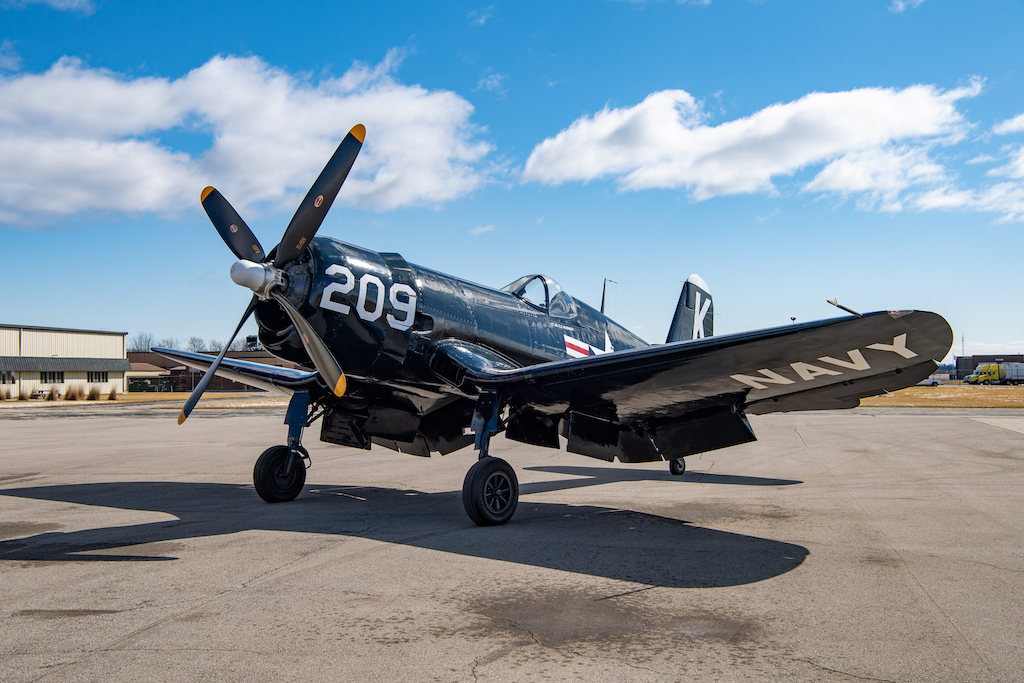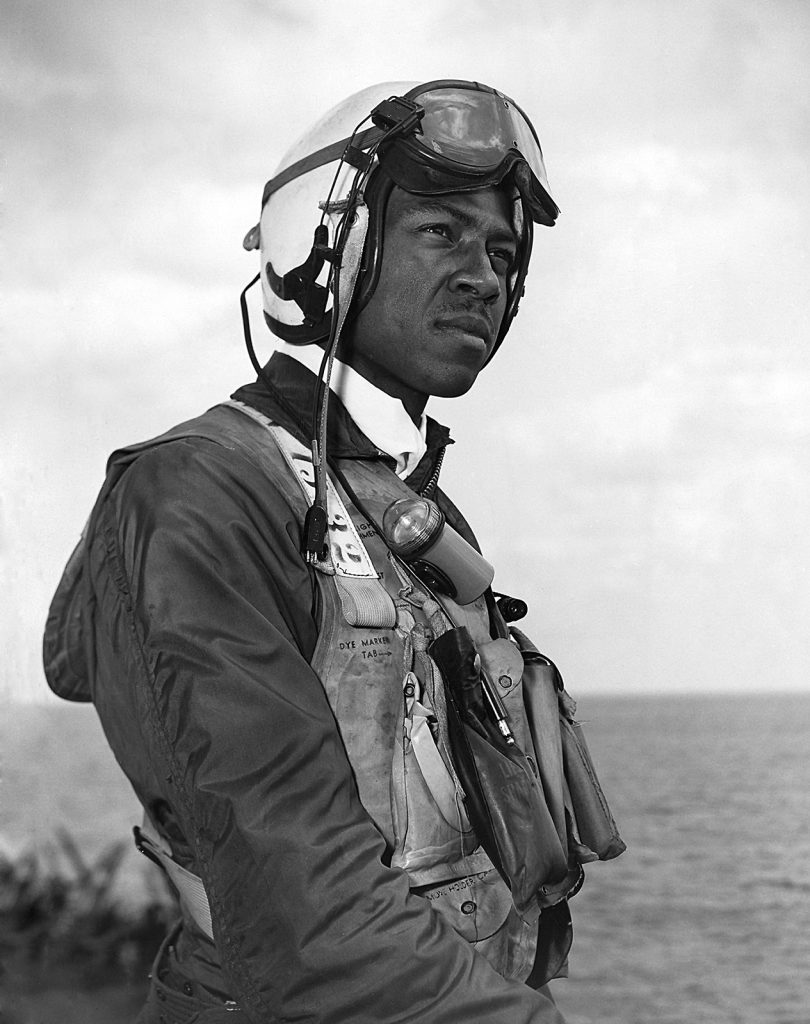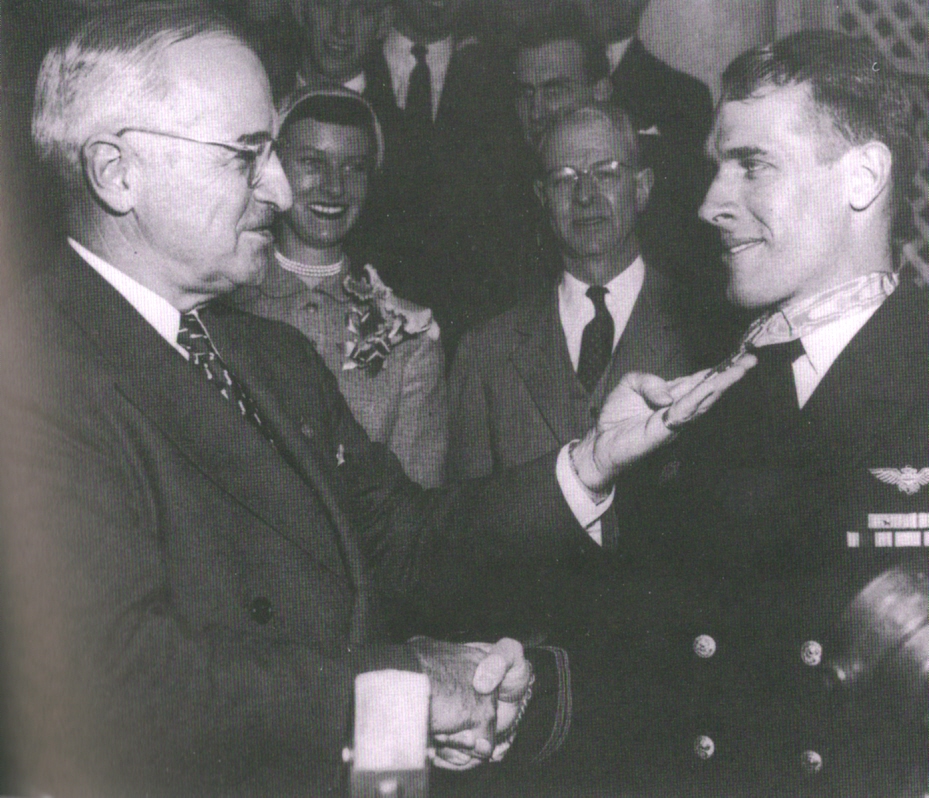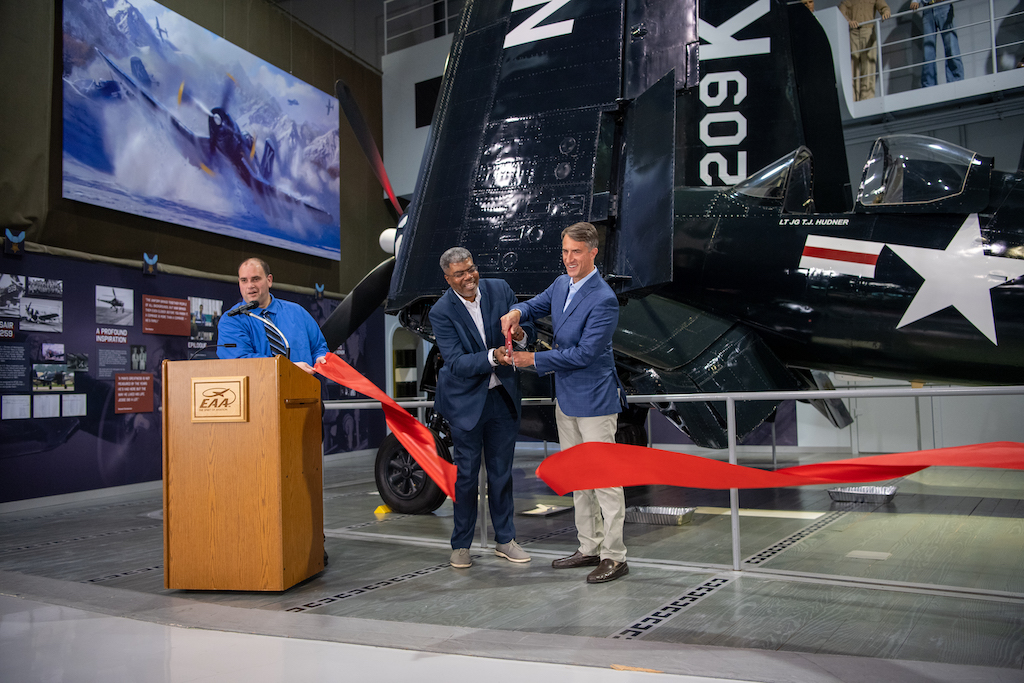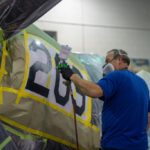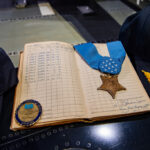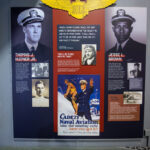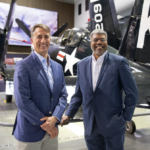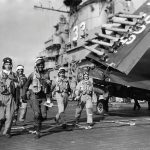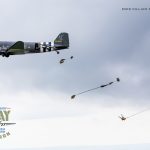PRESS RELEASE – EAA AVIATION CENTER, OSHKOSH, Wisconsin — (April 25, 2022) — A new exhibit that opened on April 23 in the EAA Aviation Museum’s Eagle Hangar honors the late Thomas Hudner, a Korean War Medal of Honor recipient, with a Corsair aircraft that replaced the one Hudner used in his heroic actions that earned him the Medal of Honor.
The airplane has been in the EAA collection for 40 years and was fully restored in 1994 with the markings of World War II ace Kenneth Walsh. Recent research into the aircraft log books, however, showed the Corsair was a replacement for the Corsair that Hudner crash-landed in Korea in 1950 in an attempt to save fellow pilot Jesse Brown, the U.S. Navy’s first Black naval aviator. Hudner logged many hours and multiple carrier landings in the EAA aircraft, which after its Navy service was owned by several individuals before it was donated to EAA in 1982.
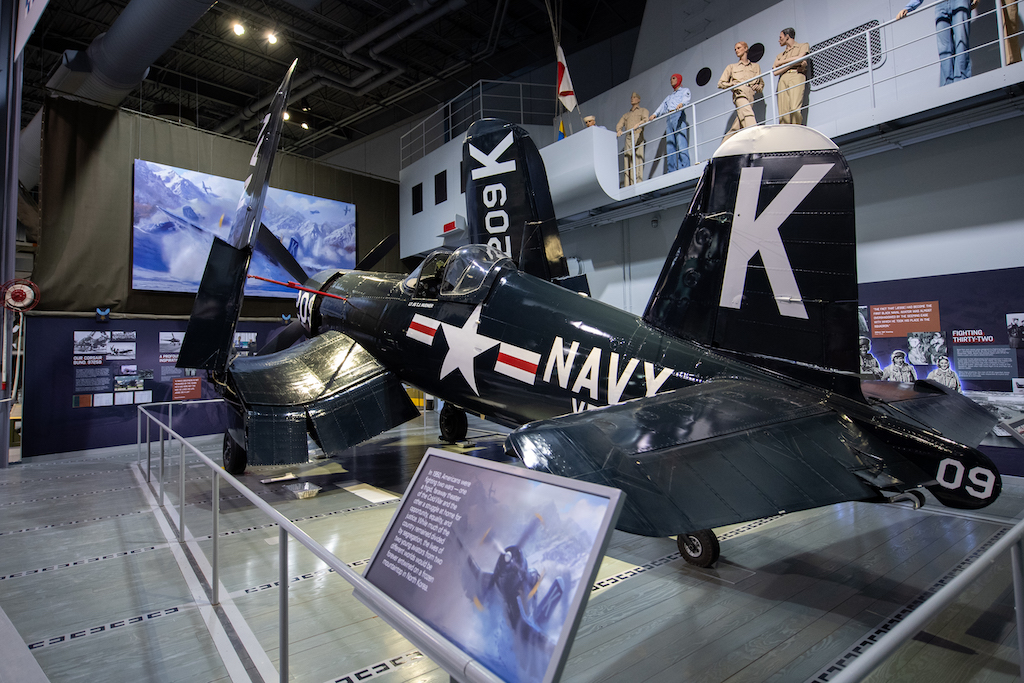
“When we discovered that our Corsair had a direct connection to a Medal of Honor recipient, it was an easy decision to restore the airplane to its Korean War markings to honor him,” said Ron Connolly, EAA Aviation Museum director. “This new exhibit also honors Jesse Brown as a naval aviator and the bond he forged with his squadron mates during that time.”
Members of the Hudner and Brown families were at the museum as part of the formal dedication of the display, including Thomas Hudner III, son of Thomas Hudner, and Jamal Knight, grandson of Jesse Brown. They also loaned personal memorabilia that adds to the authenticity of the exhibit.
Born in Hattiesburg, Mississippi, on October 13, 1926, Brown began an avid interest in aviation at age six when his father took him to an air show. That continued through his early years and during his attendance at Ohio State University. Brown entered the Navy’s aviation cadet training program in 1946 and earned his naval aviator wings in 1948. He was America’s first Black naval aviator, receiving wide media visibility for the achievement. Brown earned his first carrier assignment to the USS Leyte in 1949, which was directed to Korea in 1950 in support of United Nations military efforts. Brown’s final assignment was as part of a flight supporting U.S. ground forces near the Chosin Reservoir in December 1950. During that mission, Brown’s aircraft was shot down and he was forced to crash-land his Corsair in a small valley. He was trapped in the cockpit during the landing, however, and eventually succumbed to his injuries. For his actions, Brown was posthumously awarded the Distinguished Flying Cross, Purple Heart, and Air Medal, among others. He also inspired numerous other Black men to become military pilots. The Navy commissioned the frigate USS Jesse L. Brown in his honor in 1973, and a Veterans Administration hospital in Chicago is named in his honor.
The Korean War incident that memorialized Hudner and Brown is the subject of a soon-to-be-released major motion picture titled Devotion, starring Screen Actors Guild award winner Glen Powell, as well as Jonathan Majors, Serinda Swan, and Joe Jonas. That movie is scheduled to be released later this year, and EAA has been in regular contact with the movie production team in an advisory role.
Born in Fall River, Massachusetts, on August 31, 1924, Hudner graduated from the United States Naval Academy and eventually was drawn to naval aviation. As a Corsair pilot at the start of the Korean War, he was assigned to Fighter Squadron 32, flying missions from the USS Leyte. On December 4, 1950, Hudner was flying in support of Marines ground troops near the Chosin Reservoir in Korea. Hudner’s wingman, Jesse Brown, had his Corsair damaged and was forced to crash land. Hudner opted to crash-land his aircraft near Brown’s in an effort to free his fellow pilot, who was trapped in the cockpit. Hudner’s heroics earned him the Medal of Honor nomination, with the medal presented to Hudner by President Harry Truman on April 13, 1951. Hudner remained in the U.S. Navy until 1974, serving in multiple leadership roles until his retirement from military service in 1973. He later served as Commissioner for the Massachusetts Department of Veterans Services (1991-99). The U.S. Navy honored Hudner in 2017 by christening a destroyer the USS Thomas Hudner. His autobiography, Devotion, written with Adam Zakos, was published in 2015 and is currently in final production as a major motion picture. Hudner died on November 13, 2017, at age 93. He is buried at Arlington National Cemetery.
The gull-winged Chance-Vought F4U-4 Corsair was one of the finest fighter-bomber aircraft produced during World War II. It was a formidable weapon from the closing months of WWII through the Korean War. In Korea, the Corsair was outclassed as a fighter (though it shot down at least one Chinese MiG-15 jet fighter), and it was used mostly as a ground-attack fighter/bomber. Its speed and ruggedness, and its huge bomb load capacity (rivaled only by late-model P-47s) made it very effective in the ground-attack role.
The EAA Aviation Museum’s F4U-4, built in 1945, spent the first part of its military career in mothballs. Accepted by the U.S. Navy in October 1945, this Corsair went straight into storage until 1949. It was used at several Naval Air Stations between 1949 and 1955, then disappeared from Navy records until 1966, when it was sold to a private owner. It was used as a show plane and racer until 1974, then not flown again until 1982, when it was donated to EAA, which spent 12 years restoring this aircraft, unveiling it in May 1994. Prior to its current remarking, the Corsair’s markings were those of Marine Corps Capt. Kenneth Walsh, who was the first Corsair “ace.” Walsh scored a total of 21 air victories flying Corsairs in the Pacific Theater of Operations during World War II.
Corsairs were also flown by the U.S. Navy and Marines, the British Royal Navy’s Fleet Air Arm, the Royal New Zealand Air Force, and the French Aéronavale.
More pictures by EAA Museum’s Museum Program Representative Chris Henry at this link.
About EAA Aviation Museum
The EAA Aviation Museum is located just off Interstate 41 at the Highway 44 exit in Oshkosh. The museum is open daily from 10 a.m. to 5 p.m. EAA members receive free museum admission year-round. For more information, call the EAA Aviation Museum at (920) 426-4818 or visit www.EAA.org/museum.







